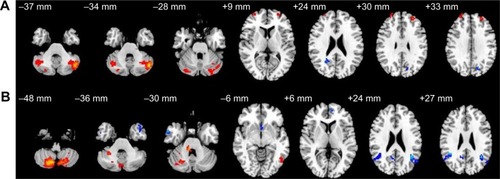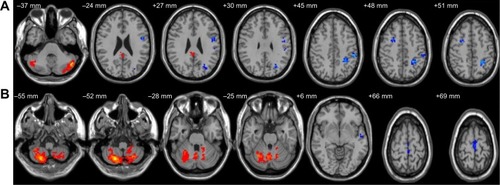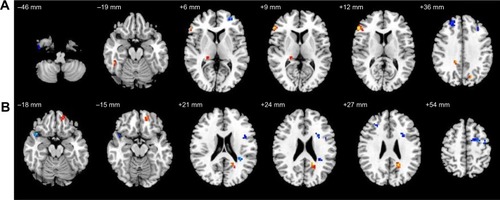Figures & data
Figure 1 Altered resting-state functional connectivity (rsFC) areas of the cerebellum posterior lobe (CPL) in the normal sleep group.

Table 1 Altered resting-state functional connectivity areas of the left cerebellum posterior lobe after normal sleep
Table 2 Altered resting-state functional connectivity areas of the right cerebellum posterior lobe after normal sleep
Figure 2 Altered resting-state functional connectivity (rsFC) areas of the cerebellum posterior lobe (CPL) in the sleep deprivation group.

Table 3 Altered resting-state functional connectivity areas of the left cerebellum posterior lobe after sleep deprivation
Table 4 Altered resting-state functional connectivity areas of the right cerebellum posterior lobe after sleep deprivation
Figure 3 Altered resting-state functional connectivity (rsFC) areas of the cerebellum posterior lobe (CPL) in the sleep deprivation group compared with in the normal sleep group.

Table 5 Altered resting-state functional connectivity regions of the left cerebellum posterior lobe after sleep deprivation versus normal sleep
Table 6 Altered resting-state functional connectivity regions of the right cerebellum posterior lobe after sleep deprivation versus normal sleep
